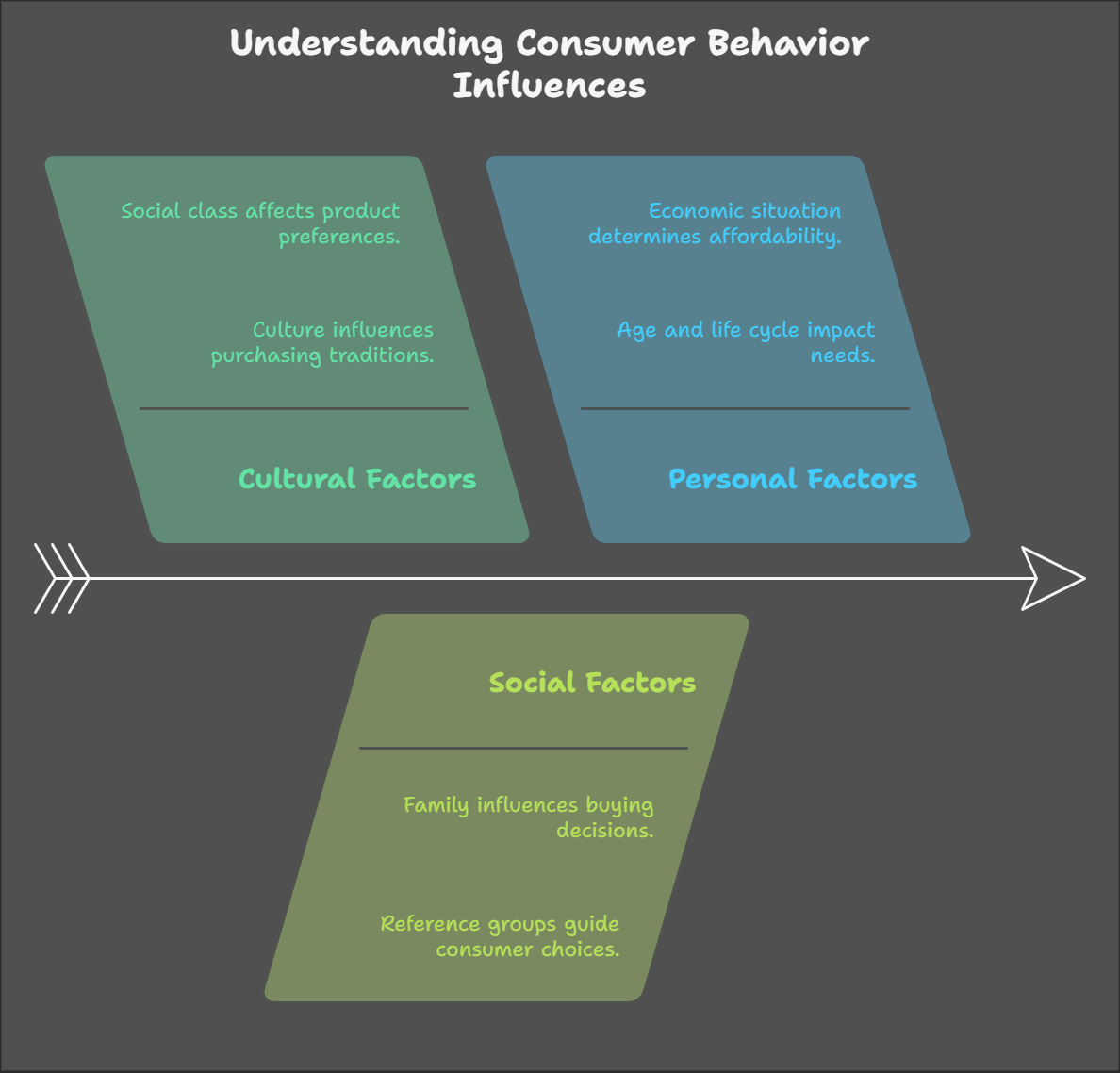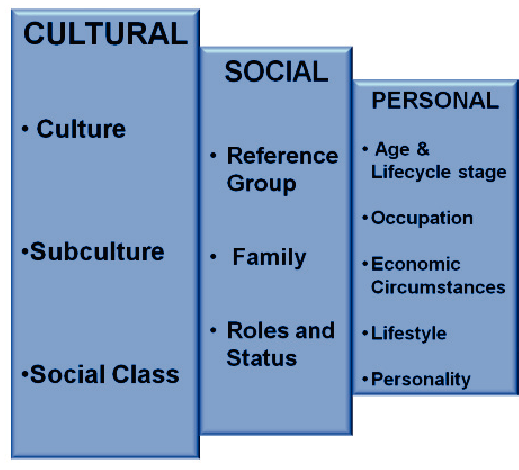Factors Affecting Consumer Behavior
1. Cultural Factors
Cultural factors play a significant role in shaping a consumer's behavior:
-
Culture: The values, beliefs, and traditions a person grows up with influence their purchasing decisions.
- Example: In some cultures, gifting during festivals is a common practice, influencing the demand for specific products.
-
Subculture: Smaller groups within a culture, like religious, regional, or ethnic groups, can also shape buying habits.
- Example: A person belonging to a specific subculture may prefer products that align with their traditions or beliefs.
-
Social Class: A person’s social class (lower, middle, upper) affects the type of products they buy and their preferences.
- Example: Higher social classes may opt for luxury items, while middle-class consumers may focus on affordability.
2. Social Factors
-
Family: Family members play a major role in influencing buying decisions.
- Example: Parents may prioritize spending on their children’s education or toys.
-
Reference Groups: Groups like friends, coworkers, or influencers guide consumer preferences and choices.
- Example: A person might buy a product recommended by their peers or a celebrity they admire.
-
Roles and Status: A person’s position in society or within a group affects their purchases.
- Example: A manager may buy formal attire for work, while a student might focus on casual wear.
3. Personal Factors
Personal characteristics unique to an individual shape their buying behavior:
-
Age and Life Cycle: A person’s age and stage in life affect their needs and purchases.
- Example: Young adults might spend more on gadgets, while older individuals may focus on healthcare products.
-
Occupation: A person’s job influences their buying habits.
- Example: A doctor might buy medical equipment, while a construction worker may focus on tools.
-
Economic Situation: A consumer’s income and savings determine what they can afford.
- Example: Someone with a high income may buy premium products, while others may seek budget-friendly options.
-
Lifestyle: The way a person lives (activities, interests, opinions) shapes their buying patterns.
- Example: A fitness enthusiast may spend more on gym memberships and healthy foods.
-
Personality: Individual traits like confidence, dominance, or introversion can affect buying preferences.
- Example: A confident person might prefer bold, unique products.
Understanding Consumer Behavior Influences
Social class affects product preferences.
Economic situation determines affordability.
Culture influences purchasing traditions.
Age and life cycle impact needs.
Cultural Factors
Personal Factors
Social Factors
Family influences buying decisions.
Reference groups guide consumer choices.
These factors collectively influence why and how consumers make their purchasing decisions.

